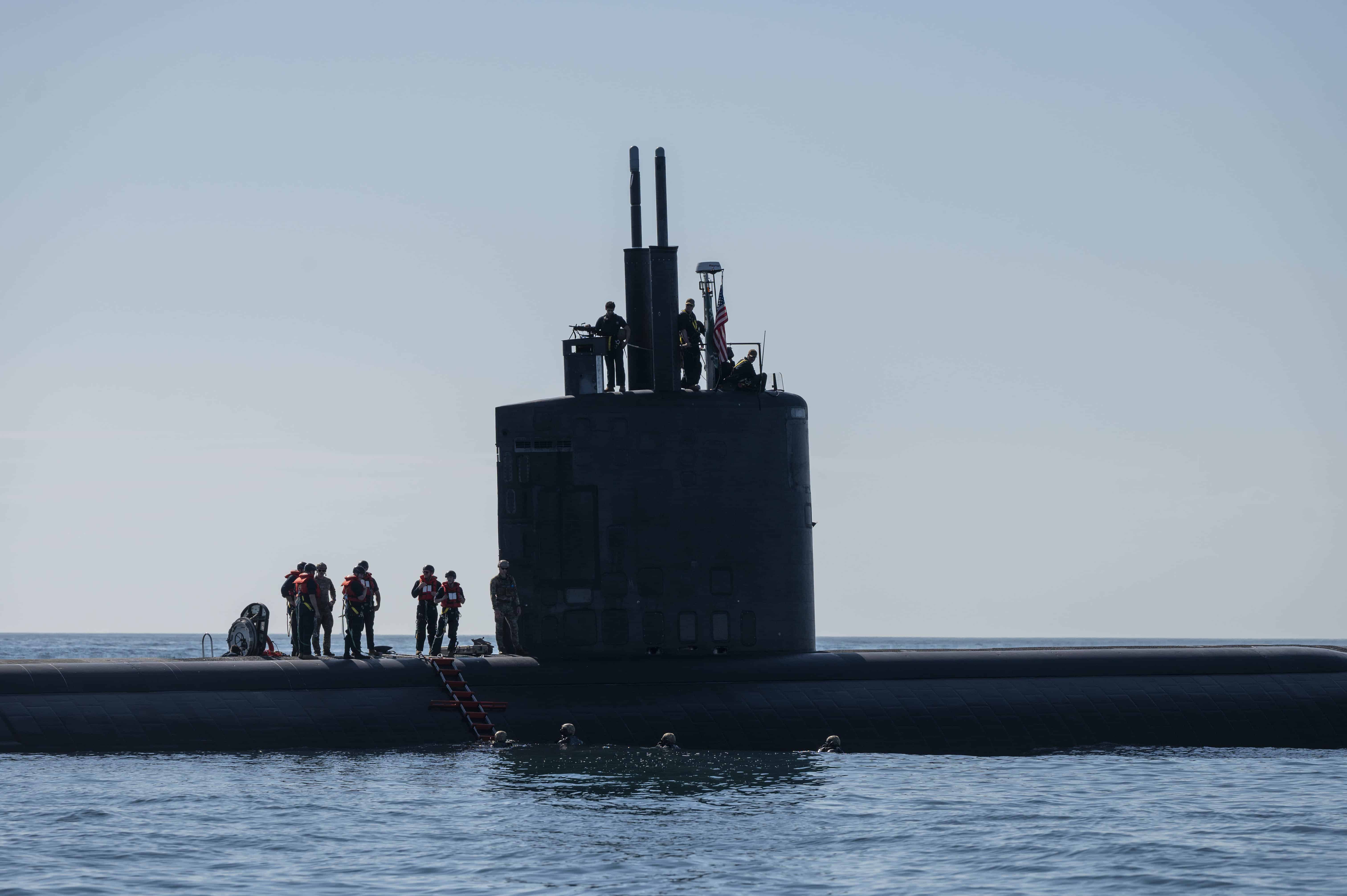The U.S. Navy recently conducted a military exercise in the Pacific involving elite Navy SEALs and the nuclear-powered Los Angeles-class submarine USS Greeneville. This exercise, held off the coast of Southern California on June 24, highlights the increasing focus of the U.S. military on preparing for potential high-end conflicts with global powers such as China, Russia, and North Korea.
Naval Special Warfare (NSW) operators from a West Coast SEAL Team participated in the drill, which was designed to enhance interoperability and warfighting capabilities within the maritime domain. The SEALs conducted a military freefall into the ocean and subsequently rendezvoused with the USS Greeneville, simulating the type of clandestine operations that would be crucial in a contested environment. The exercise also included the airborne deployment of combat rubber raiding crafts (CRRCs), further demonstrating the SEALs’ ability to operate seamlessly with the submarine force.
The USS Greeneville, a fast-attack submarine assigned to Commander Submarine Squadron 11 (CSS-11), played a central role in the exercise. Los Angeles-class submarines like the Greeneville are key assets in the U.S. Navy’s arsenal, capable of conducting a wide range of missions, including anti-submarine warfare, strike operations, and intelligence, surveillance, and reconnaissance (ISR). The submarine’s stealth capabilities enable it to approach enemy assets undetected, providing a critical advantage in both peacetime and conflict scenarios.
The joint training exercise underscores the U.S. Navy’s strategic shift in response to evolving global threats, particularly the rapid expansion of China’s naval capabilities and the growing assertiveness of Russia and North Korea. By integrating special operations forces like the Navy SEALs with advanced naval platforms such as the USS Greeneville, the U.S. aims to maintain its maritime dominance and ensure readiness.
Navy leaders emphasized the importance of such exercises in enhancing the overall lethality and effectiveness of the fleet. Capt. Kenneth Douglas, Commander of Submarine Squadron 11, noted that the exercise provided the submarine crew with a valuable opportunity to practice a unique capability, while Capt. Blake L. Chaney, Commander of Naval Special Warfare Group 1, highlighted the critical role of joint operations in securing access to contested areas.
Expanded Coverage:









